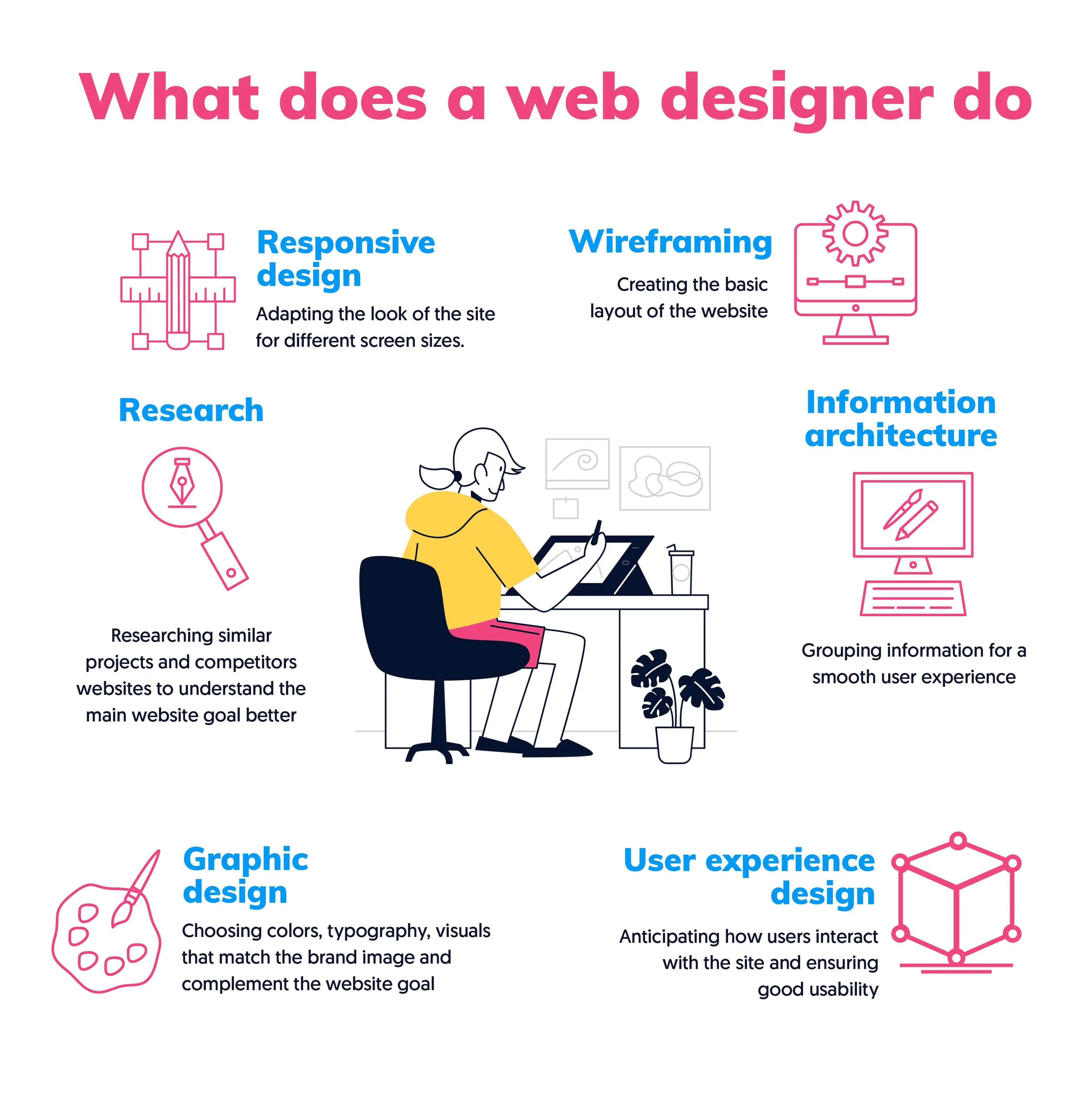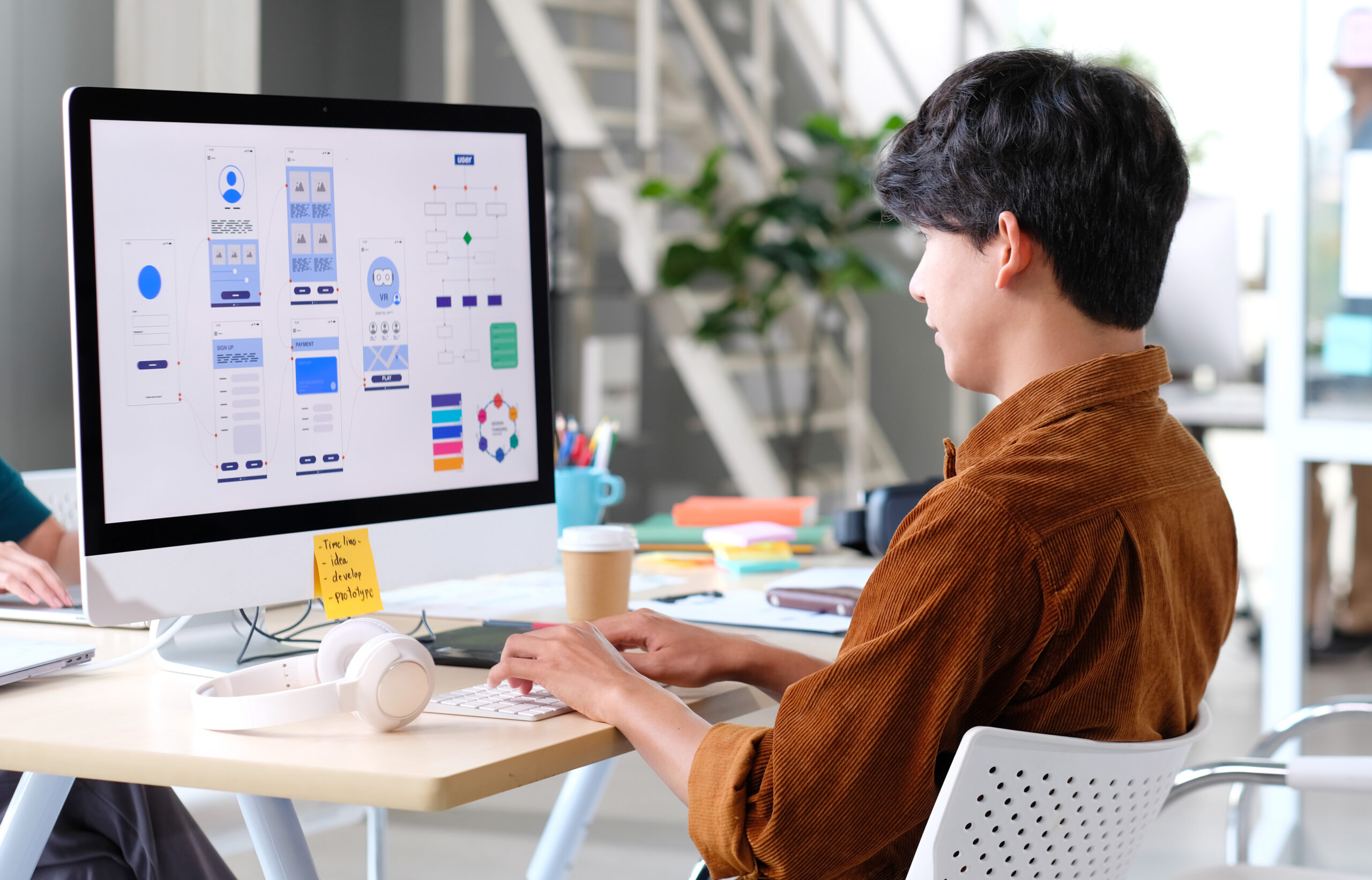How to Improve Individual Experience With Strategic Internet Layout
In the realm of electronic innovation, individual experience (UX) has actually become the linchpin of successful internet design. A calculated, user-centered approach, highlighting aesthetic uniformity, intuitive designs, and receptive layout, can substantially improve a web site's usability and appeal. As we check out these concepts carefully, the relevance of incorporating customer responses and the duty of UX in customer retention will also be checked out, inviting a deeper understanding of this vital aspect of website design.
Comprehending the Significance of Individual Experience in Web Layout
The significance of website design exists not just in visual appeals, but fundamentally in the customer experience it uses. User experience, or UX, refers to the overall experience an individual has while communicating with an internet site or web application, specifically in terms of just how comfy and pleasing it is to use (Web Design In Guildford). It is a crucial facet of website design, as it straight influences the individuals' perceptions, activities, and overall interaction with the internet site
A well-designed site with an inadequate user experience is akin to a lovely building with an inadequately prepared inside; it may look appealing externally, but it falls short to offer its intended purpose efficiently. It might hinder customers from remaining on the website, causing high bounce prices, reduced customer interaction, and inevitably, failing to attain the web site's objectives. This highlights the importance of integrating individual experience right into the website design process right from the beginning.
Using User-Centered Design Principles
The application of user-centered design concepts begins with recognizing individual actions. This understanding forms the basis for developing an effective interface design. These 2 vital components, when masterfully incorporated, cause an enhanced customer experience on any site.

Recognizing Individual Actions
Why do users behave the method they do on web sites? Individual actions is dictated by a plethora of factors, chief amongst them being their certain demands and choices, prior online experiences, and general internet savviness. Using this knowledge, web developers can develop much more effective, straightforward sites that fulfill the needs of their target market, thereby enhancing individual experience.
Effective Interface Design

Leveraging Receptive Design for Optimum Viewing
Moving on in the discussion, the interest now shifts to the significance of leveraging responsive style for ideal viewing. This entails checking out the process of implementing receptive web style and recognizing its effect on customer experience. The ensuing conversation aims to elucidate the advantages of optimal viewing and just how responsive layout promotes it.
Applying Responsive Website Design
Utilizing the power of receptive internet style is an essential step in the direction of boosting user experience. To implement this properly, web developers have to consider a selection of variables. The layout ought to adjust seamlessly to various display sizes, from desktop screens to smaller mobile phones. This requires an adaptable grid-based system, making sure material resizes efficiently. Images must also be adaptable, getting used to fit the readily available display location without distortion. Additionally, developers need to incorporate media inquiries, making it possible for the web site to identify the customer's tool kind and display dimension. These elements integrated produce a receptive click now web style that adapts to the user's demands. While the procedure might appear complex, the outcome is an extra intuitive and accessible internet site, significantly enhancing the individual experience.
Benefits of Ideal Viewing

Additionally, receptive layout can lead to enhanced SEO rankings, as internet search engine prefer websites that deal with multiple devices. Finally, it can decrease bounce prices and boost conversion rates as users are less likely to desert sites that are very easy to navigate. Hence, optimum viewing can considerably improve individual experience, making it an essential facet of tactical website design.
Integrating Easy Navigation and Intuitive Layouts
Reduce and intuition in website navigation create the bedrock of individual complete satisfaction. If users battle to find what they are looking for, they are likely to abandon the website and seek alternatives.
Basic navigation food selections, breadcrumb trails, and clickable switches direct users with the site easily. Consistency in layout elements across web pages additionally adds to instinctive navigation. Putting the search bar or the purchasing cart symbol in the same area on every page enables customers to locate these functions swiftly.
Furthermore, an instinctive format is one that expects customer needs. It places aspects and details where customers expect them to be. This minimizes the cognitive load on individuals, improving their total experience on the website.
The Role of Visual Style in Customer Experience
While the framework and design of an internet site are significant for individual experience, the visual design plays an equally essential function. It is the aesthetic layout that originally attracts helpful hints the customer's focus, making it a key component in creating a engaging and immersive experience. Visual design aspects such as color, typography, pictures, and icons interact the brand's message, create a state of mind, and overview customers' communications on the web page. A well-executed aesthetic style can not only bring in individuals yet additionally aid them recognize the material much better and navigate the website extra conveniently. A inconsistent or chaotic visual design can lead and confuse individuals to a negative individual experience. Internet designers have to tactically use aesthetic style elements to produce a harmonious and instinctive individual interface that boosts the general user experience. This process calls for a deep understanding of the target individuals, their demands, and preferences, along with the brand's identification and goals.
Case Studies: Effective Customer Experience Design at work
Despite the academic expertise on user experience layout, it acquires genuine worth when used in practical situations. 2 remarkable study show this. Airbnb, an international online market, efficiently boosted their customer experience by redesigning their site. By concentrating on individual responses, they created a more intuitive, user-friendly user interface that substantially enhanced reserving experiences. This caused raised user fulfillment and conversion rates.
In an additional circumstances, the New York Times upgraded their website to prioritize customer experience. They optimized their website for mobile use, recognizing that an expanding number of their viewers gain access to information through smartphones - Web Design In Guildford. They also streamlined their material presentation, making it much easier for visitors to navigate and discover relevant short articles. The outcomes were a substantial boost in mobile web traffic and user involvement, showing the efficacy of tactical web design in enhancing customer experience. These situation research studies reveal that functional application of individual experience layout can yield considerable advantages.
Verdict
To conclude, strategic internet layout is a vital tool in boosting customer experience. By using user-centric layout concepts, leveraging responsive layout, incorporating intuitive navigation and formats, and utilizing the power of aesthetic design, organizations can develop web sites that are engaging and pleasing for customers. Effective internet design, showcased through numerous effective instance studies, dramatically raises customer engagement and retention rates, proving its critical role in digital success.
As we check out these principles in information, the significance of incorporating user comments and the function of UX in individual retention will certainly likewise be analyzed, inviting a deeper understanding of this critical aspect of web style.
It may hinder individuals from remaining on the website, leading to high bounce prices, reduced customer interaction, and eventually, failure to accomplish this link the internet site's objectives. A irregular or cluttered visual style can puzzle customers and lead to a negative customer experience. Internet developers should purposefully utilize visual design components to create a instinctive and unified individual interface that improves the overall user experience. The results were a substantial rise in mobile web traffic and user interaction, showing the efficacy of critical web style in enhancing individual experience.